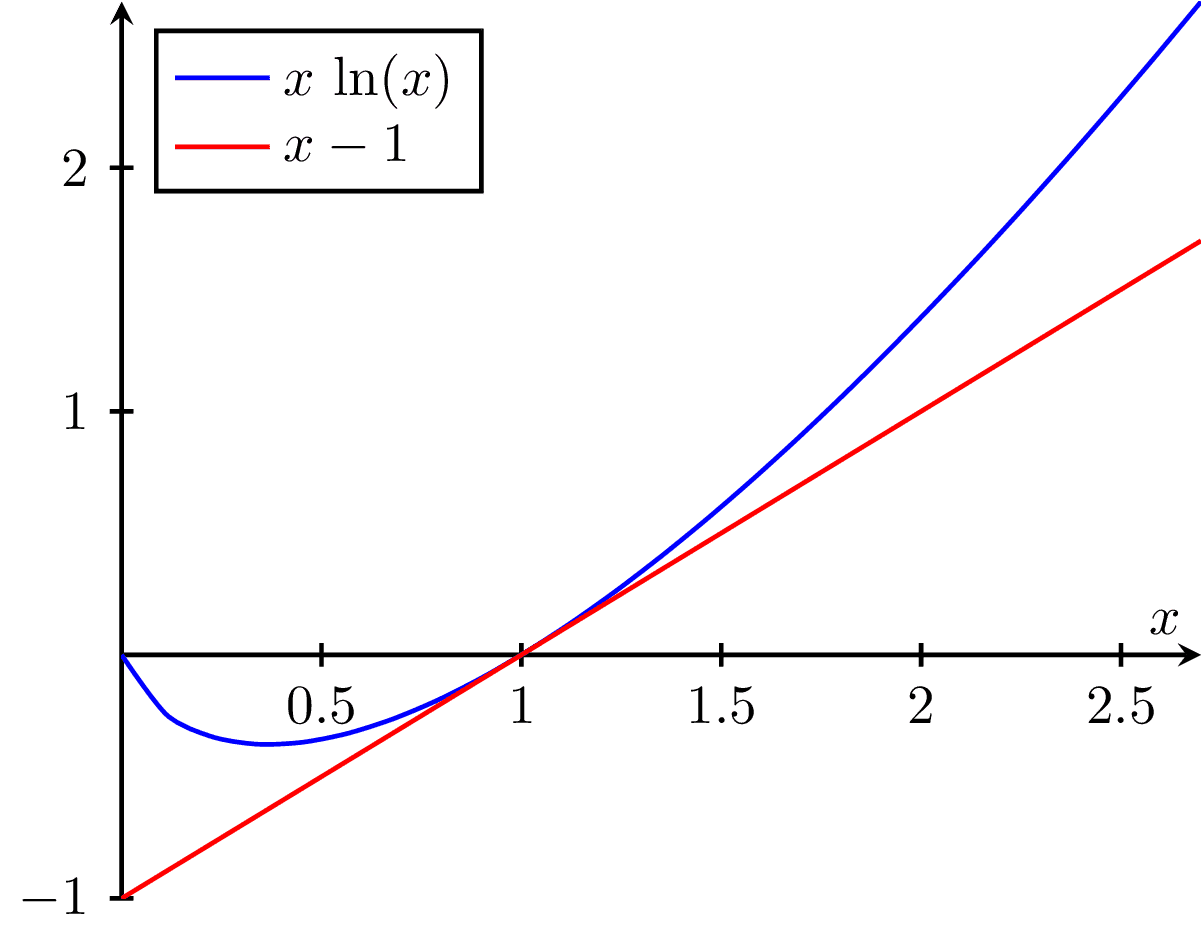Convex Functions
$x$ and $-x\log(x)$ are concave functions. Since $\ln(p)$ decomposes into sums of these two components, it too must be concave. Any extremum of a concave function is a maximum. This fact is used in statistical physics to find the equilibrium distribution of many-particle systems. See problem 2 on this exercise sheet.

Download
Code
convex-functions.typ (36 lines)
convex-functions.tex (26 lines)